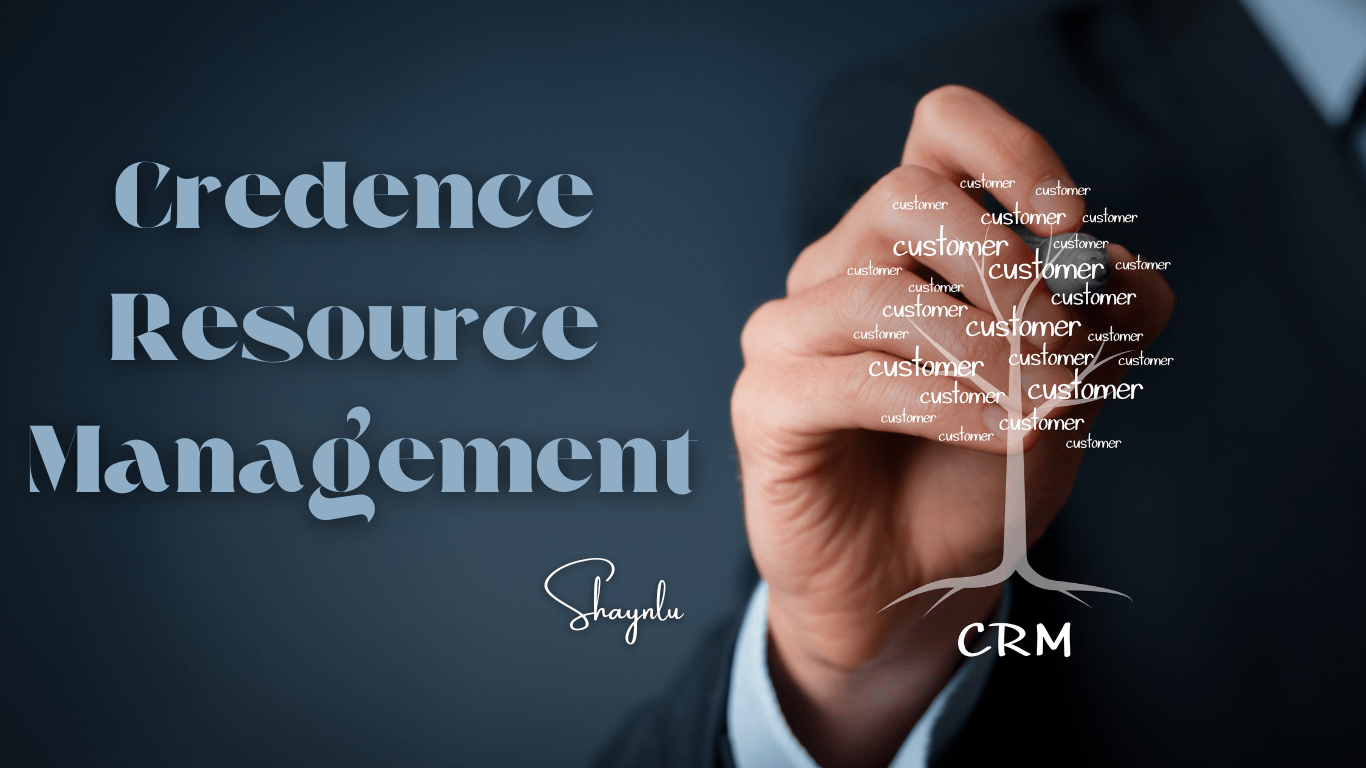In the fast-paced world of business, effective resource management is a key driver of success. One approach gaining traction is Credence Resource Management (CRM), a strategy that emphasizes trust, transparency, and efficient communication. Let's dive into the intricacies of CRM and explore how it can revolutionize your business.
I. Introduction
A. Definition of Credence Resource Management (CRM)
Credence Resource Management is a holistic business strategy focused on building trust, optimizing resource allocation, and fostering transparent communication within an organization.
B. Importance of CRM in Business
In an era where relationships matter as much as transactions, CRM emerges as a crucial tool for businesses aiming to establish long-term connections with clients, partners, and employees.
II. History of Credence Resource Management
A. Origins and Evolution
The roots of CRM can be traced back to the need for businesses to move beyond transactional interactions and build lasting relationships. Over the years, CRM has evolved to incorporate technological advancements and changing business landscapes.
B. Key Milestones
Notable milestones in the evolution of CRM include its incorporation into various industries, with success stories illustrating its positive impact on organizational dynamics.
III. Principles of Credence Resource Management
A. Trust-building in Business Relationships
Trust forms the cornerstone of CRM, as businesses focus on cultivating relationships based on credibility, reliability, and ethical conduct.
B. Efficient Resource Allocation
CRM emphasizes the intelligent allocation of resources, ensuring that assets are utilized optimally to meet business objectives.
C. Transparent Communication
Open and honest communication is paramount in CRM, facilitating a collaborative environment and minimizing misunderstandings.
IV. Applications of Credence Resource Management
A. Business and Organizational Settings
CRM is versatile, finding applications in various business sectors, from finance to healthcare, and proving beneficial for organizations of all sizes.
B. Integration with Technology
The synergy of CRM with cutting-edge technologies enhances its effectiveness, providing tools for streamlined communication and data-driven decision-making.
C. Case Studies
Real-world examples showcase how businesses have successfully implemented CRM, resulting in improved efficiency and stakeholder satisfaction.
V. Benefits of Implementing Credence Resource Management
A. Enhanced Business Performance
By fostering trust and improving resource utilization, CRM contributes to overall business performance, driving growth and profitability.
B. Improved Customer Relations
CRM's customer-centric approach enhances client satisfaction, leading to increased loyalty and repeat business.
C. Increased Employee Productivity
Transparent communication and efficient resource allocation positively impact employee morale and productivity.
VI. Challenges and Solutions in Credence Resource Management
A. Overcoming Trust Issues
Addressing trust challenges is integral to CRM success, requiring proactive measures to build and maintain trust among stakeholders.
B. Addressing Communication Gaps
Identifying and resolving communication gaps ensures that information flows seamlessly, preventing misunderstandings and enhancing collaboration.
C. Adapting to Changing Business Dynamics
Flexibility is key in CRM implementation, as businesses must adapt to evolving market trends and industry landscapes.
VII. Future Trends in Credence Resource Management
A. Emerging Technologies
The integration of AI, blockchain, and other emerging technologies is set to further enhance CRM capabilities, opening new avenues for business optimization.
B. Evolving Business Practices
As businesses continue to prioritize sustainability and ethical practices, CRM will evolve to align with these changing norms.
VIII. Case Study: Successful Implementation of Credence Resource Management
A. Real-world Example
A case study highlights how a company successfully implemented CRM, detailing the challenges faced, strategies employed, and the positive outcomes achieved.
B. Lessons Learned
Key takeaways from the case study provide valuable insights for businesses considering CRM adoption.
IX. Tips for Effective Credence Resource Management
A. Establishing Clear Communication Channels
Clear and accessible communication channels are vital for successful CRM implementation, fostering transparency and reducing misunderstandings.
B. Building and Sustaining Trust
Continuous efforts to build and sustain trust are essential, involving consistent ethical conduct and transparent business practices.
C. Utilizing Technology Wisely
While technology enhances CRM, it's crucial to choose and implement tools wisely, aligning them with the specific needs and goals of the organization.
X. Conclusion
A. Recap of Key Points
In summary, Credence Resource Management offers a holistic approach to business success, emphasizing trust, efficient resource allocation, and transparent communication.
B. Encouragement for Adoption
Businesses are encouraged to explore and adopt CRM, recognizing its potential to transform relationships, improve performance, and drive sustainable growth.
XI. Frequently Asked Questions (FAQs)
A. How does Credence Resource Management differ from traditional resource management?
CRM differs by placing a strong emphasis on trust, transparent communication, and efficient resource allocation, fostering long-term relationships.
B. Can small businesses benefit from implementing CRM?
Absolutely. CRM is scalable and adaptable, making it beneficial for businesses of all sizes, including small enterprises aiming for growth and sustainability.
C. What role does technology play in CRM?
Technology is integral to CRM, offering tools for transparent communication, data analysis, and automation to enhance overall effectiveness.
D. How can companies address trust issues in CRM?
Building trust requires consistent ethical conduct, transparent practices, and a commitment to delivering on promises, fostering credibility among stakeholders.
E. Are there any industries where CRM is not applicable?
CRM is versatile and applicable across various industries. Any sector that values long-term relationships and effective resource management can benefit from CRM.

